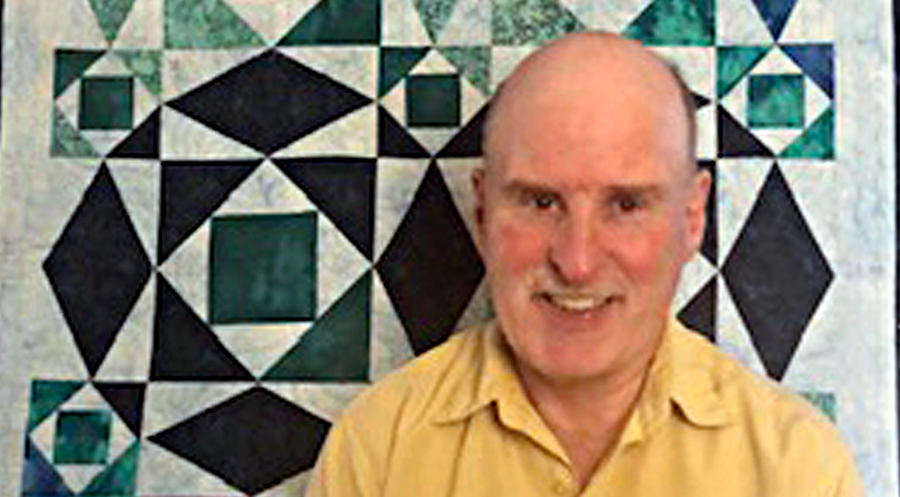Meet Kevin
“I became fascinated by the heart when I was 13 years old as a volunteer with the Red Cross. When I began to look for paid employment, nursing was big, so I went that route… and that’s where it led me for 30 years until my heart attack.”
From cardiac nurse to cardiac patient, Kevin could predict that he, like his patients, would forge his path through cardiac care.
“My journey started in March 2007 with a heart attack at age 47. I was fairly young, but it wasn’t unexpected because of my family’s genetics. I look like the men on my mum’s side of the family. I’ve got an uncle and a cousin, who, when we were together, people used to think we were father and sons. My mum had three brothers, two of which died of cardiac-related illnesses. One died of a massive heart attack at 52, and the second died of cardiac disease after a long battle that included several stents and a couple of bypass surgeries. The same weekend I had my heart attack; my father was dying in England from his battle with cardiac disease. He had his first heart attack at age 52 and was also relatively young.
Fortunately, I only had a very small blockage, and I got admitted to the cardiac intensive care unit, where I worked as a registered nurse. This stressed out my co-workers to no end. I was then sent to St. Paul’s Hospital in Vancouver for further investigation. A couple of days later, I had an angiogram that determined I had a 95% blockage in the top third of my left anterior descending artery, one of the heart’s main arteries.
They call this the “widowmaker” because if that artery closes off, you collapse instantly. So, I was fortunate that I had the small heart event first. I had a stent put in, and I went home and recuperated.”
Although Kevin felt he was on the mend and progressing well, in January of 2010, while celebrating his brother-in-law’s birthday in Northern British Columbia, he began experiencing worrying symptoms.
“We had been outside playing in minus 20-degree weather with the kids and grandkids, and when we returned to the house, I started to get some chest pain. I pulled my wife to the side, and we slipped away unnoticed while the celebrations were going on and went to the local hospital. When the pain settled, I was allowed to go home. Still, a couple of days later, I started getting more chest pain which turned into an episode of unstable angina that continued to progress. I got to the point where I couldn’t even take a shower or empty the dishwasher without getting chest pain. A few days later, I had another angiogram at Kelowna General Hospital to check on my arteries again. To my surprise, it showed my arteries were in better shape than they had been three years previous – so what I was doing for self-care was working! They put me on the old-fashioned drug Cardizem, and to this day, it has helped. Touch wood, it’s been 15 or 16 years, and I haven’t required surgery yet.”
For many patients with cardiac-related lived experience, a big part of their journey is navigating a new “everydayness.” Kevin describes this as something he’s “learned to live with.”
“I do have some limitations. I get shortness of breath if I go upstairs or up any significant incline. As long as I stay flat, I can walk forever without issues. It’s something I’ve learned to live with, but it doesn’t stop me from doing most of the activities I do in my life. Now they’re more sedentary compared to the active stuff I used to do for years, like playing soccer. I played at a fairly competitive level, refereed and coached. I was also an instructor for the BC Soccer Association, involved heavily for several years. Because of these limitations I had to leave bedside nursing and ended my professional career working in a PreSurgical Screening Clinic for the final 10 years.”
Not only does Kevin remain active “walking on the flat” and participating in the sport of Lawn Bowls, but he’s also involved as a Patient Partner with the Patient Voices Network in British Columbia and contributed to the program and website design for SaveBC (a genetic research project for patients with premature cardiac disease)
Since 2021, Kevin has partnered with CANet to help inform our digital health platform.
“I’m very passionate about driving positive change in the healthcare system and making it more accessible to patients and their families. I was a registered nurse for 40 years, and for 30 of those years, I worked with cardiac patients. My work as a Patient Partner, which I’ve been doing since I retired in 2018, is an extension of what I did as a registered nurse – informing resources and advocating for patients and families for an improved healthcare system.
The general theme throughout my nursing career was that most patients often need clarification on the terminology of healthcare workers. Using my clinical experience, I wanted to get involved in demystifying medical terminology for patients and their families. That’s why I was also drawn to CANet’s VIRTUES project.
I like seeing modern technology where patients and their families can have clear and concise information at their fingertips, giving them better knowledge about their disease process.
Knowledge is power, and VIRTUES puts the power in the hands of the patient. It’s vital to give patients a roadmap for where they might be going to help them become more dynamic participants alongside their healthcare team.
The more information we can give people, the safer they will be.”

